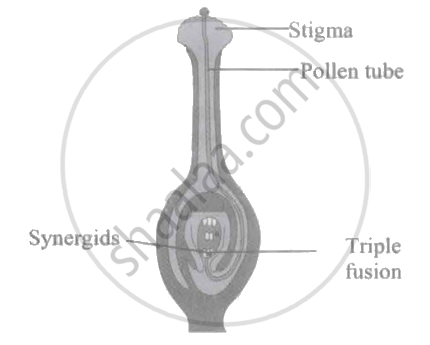Advertisements
Advertisements
प्रश्न
Can an unfertilised, apomictic embryo sac give rise to a diploid embryo? If yes, then how?
उत्तर
Yes, if the embryo develops from the cells of nucellus or integument it will be diploid.
APPEARS IN
संबंधित प्रश्न
(a) Explain the events after pollination leading to the formation of a seed in angiosperms.
(b) Mention the ploidy levels of the cells of different parts of an albuminous seed.
Fill in the blanks with suitable words.
Transference of pollen grains from anthers to stigma of the same flower is called ________.
Give one word/term for the following:
When pollen grains of a flower reach the stigma of the same flower.
What happens to the following after fertilization?
Calyx
Given ahead is a diagrammatic representation of the process of fertilization. Study the same and then answer the question that follows:

What part does the stigma play in the process of fertilisation?
What is the significance of the dispersal of seeds? Give any two points.
Even though each pollen grain has 2 male gametes, why at least 20 pollen grains are required to fertilize 20 ovules in a particular carpel?
Give any four points of significance of double fertilization.
After fertilization the ovule becomes ______.
Male gametes in angiosperms are formed by the division of ______.
Transmitting tissue is found in
‘Pollination in Gymnosperms is different from Angiosperms’ – Give reasons.
Explain the development of a Dicot embryo
Due to which of the following reasons the pollen tube usually grows down towards the egg?
Following diagram represents double fertilization. Identify the INCORRECT label.

Double fertilisation was first discovered in 1898 by ______ in Fritillaria and Lilium.
______ have the smallest seeds in the plant kingdom.
Double fertilization is a distinctive feature of ______.
